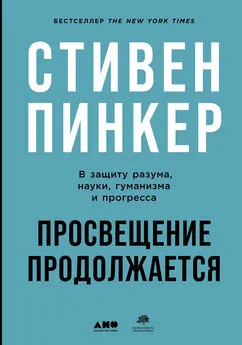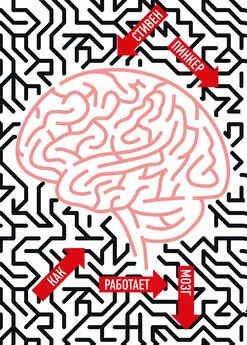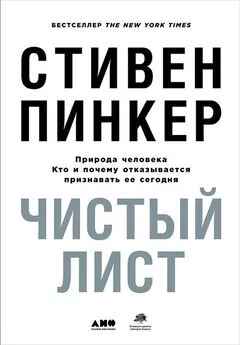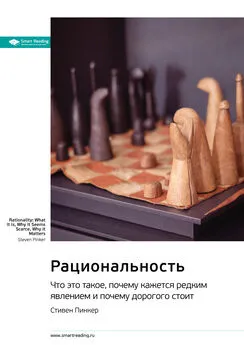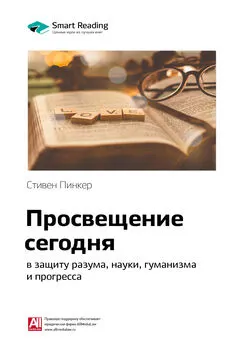Стивен Пинкер - Просвещение продолжается. В защиту разума, науки, гуманизма и прогресса
- Название:Просвещение продолжается. В защиту разума, науки, гуманизма и прогресса
- Автор:
- Жанр:
- Издательство:Альпина нон-фикшн
- Год:2021
- Город:Москва
- ISBN:9785001395362
- Рейтинг:
- Избранное:Добавить в избранное
-
Отзывы:
-
Ваша оценка:
Стивен Пинкер - Просвещение продолжается. В защиту разума, науки, гуманизма и прогресса краткое содержание
Этот прогресс – не случайность и не результат действия внешних сил. Это дар современному миру от деятелей Просвещения, которые первыми додумались, что знания можно использовать во имя процветания всего человечества. Идеи Просвещения – вовсе не наивные мечтания. Наоборот, они сработали – и это неоспоримый факт. Тем не менее именно сейчас эти идеи особенно нуждаются в нашей защите, поскольку противостоят характерным недостаткам человеческой природы – трайбализму, авторитаризму, демонизации чужаков и магическому мышлению, – которые так нравится эксплуатировать современным демагогам. Да, стоящие перед человечеством проблемы огромны, но все они решаемы, если мы, продолжая дело Просвещения, используем для этого разум, доверяем науке и руководствуемся идеалами гуманизма.
Особенности
Более 70 графиков из почти всех областей человеческой жизни.
Для кого
Для поклонников Стивена Пинкера. Для всех, кто интересуется природой человека. Для тех, кто верит в прогресс, и для тех, кто в нем сомневается.
Просвещение продолжается. В защиту разума, науки, гуманизма и прогресса - читать онлайн бесплатно ознакомительный отрывок
Интервал:
Закладка:
Snow, C. P. 1959/1998. The two cultures . New York: Cambridge University Press.
Snow, C. P. 1961. The moral un eutrality of science. Science, 133, 256–59.
Snowdon, C. 2010. The spirit level delusion: Fact hecking the left’s new theory of every thing . Ripon, UK: Little Dice.
Snowdon, C. 2016. The Spirit Level Delusion (blog). http://spiritleveldelusion.blogspot.co.uk/.
Snyder, T. D., ed. 1993. 120 years of American education: A statistical portrait . Washington: National Center for Educational Statistics.
Somin, I. 2016. Democracy and political ignorance: Why smaller government is smarter (2nd ed.). Stanford, CA: Stanford University Press.
Sowell, T. 1980. Knowledge and decisions . New York: Basic Books.
Sowell, T. 1987. A conflict of visions: Ideological origins of political struggles . New York: Quill.
Sowell, T. 1994. Race and culture: A world view . New York: Basic Books.
Sowell, T. 1995. The vision of the anointed: Self ongratulation as a basis for social policy. New York: Basic Books.
Sowell, T. 1996. Migrations and cultures: A world view . New York: Basic Books.
Sowell, T. 1998. Conquests and cultures: An international history . New York: Basic Books.
Sowell, T. 2010. Intellectuals and society . New York: Basic Books.
Sowell, T. 2015. Wealth, poverty, and politics: An international perspective . New York: Basic Books.
Spagat, M. 2015. Is the risk of war declining? Sense About Science USA . http://www.senseaboutscienceusa.org/is-the-risk-of-war-declining/.
Spagat, M. 2017. Pinker versus Taleb: A non eadly quarrel over the decline of violence. War, Numbers, and Human Losses . http://personal.rhul.ac.uk/uhte/014/York%20talk%20Spagat.pdf.
Stansell, C. 2010. The feminist promise: 1792 to the present . New York: Modern Library.
Stanton, S. J., Beehner, J. C., Saini, E. K., Kuhn, C. M., & LaBar, K. S. 2009. Dominance, politics, and physiology: Voters’ testosterone changes on the night of the 2008 United States presidential election. PLOS ONE, 4, e7543.
Starmans, C., Sheskin, M., & Bloom, P. 2017. Why people prefer unequal societies. Nature Human Behavior, 1, 1–7.
Statistics Times. 2015. List of European countries by population (2015). http://statisticstimes.com/population/european-countries-by-population.php.
Steigmann all, R. 2003. The Holy Reich: Nazi conceptions of Christianity, 1919–1945 . New York: Cambridge University Press.
Stein, G., ed. 1996. Encyclopedia of the Paranormal . Amherst, NY: Prometheus Books.
Stenger, V. J. 2011. The fallacy of fine uning: Why the universe is not designed for us. Amherst, NY: Prometheus Books.
Stephens avidowitz, S. 2014. The cost of racial animus on a black candidate: Evidence using Google search data. Journal of Public Economics, 118, 26–40.
Stephens avidowitz, S. 2017. Everybody lies: Big data, new data, and what the internet reveals about who we really are . New York: HarperCollins.
Stern, D. 2014. The environmental Kuznets curve: A primer. Centre for Climate Economics and Policy, Crawford School of Public Policy, Australian National University.
Sternhell, Z. 2010. The anti nlightenment tradition . New Haven: Yale University Press.
Stevens, J. A., & Rudd, R. A. 2014. Circumstances and contributing causes of fall deaths among persons aged 65 and older: United States, 2010. Journal of the American Geriatrics Society, 62, 470–75.
Stevenson, B., & Wolfers, J. 2008a. Economic growth and subjective well eing: Reassessing the Easterlin paradox. Brookings Papers on Economic Activity, 1–87.
Stevenson, B., & Wolfers, J. 2008b. Happiness inequality in the United States. Journal of Legal Studies, 37, S33–S79.
Stevenson, B., & Wolfers, J. 2009. The paradox of declining female happiness. American Economic Journal: Economic Policy, 1, 2190–2225.
Stevenson, L., & Haberman, D. L. 1998. Ten theories of human nature . New York: Oxford University Press.
Stokes, B. 2007. Happiness is increasing in many countries – but why? Washington: Pew Reseach Center. http://www.pewglobal.org/2007/07/24/happiness-is-increasing-in-many-countries-but-why/#rich-and-happy.
Stork, N. E. 2010. Re ssessing current extinction rates. Biodiversity and Conservation, 19, 357–71.
Stuermer, M., & Schwerhoff, G. 2016. Non enewable resources, extraction technology, and endognous growth. National Bureau of Economic Research. https://paulromer.net/wp-content/uploads/2016/07/Stuermer-Schwerhoff-160716.pdf.
Suckling, K., Mehrhof, L. A., Beam, R., & Hartl, B. 2016. A wild success: A systematic review of bird recovery under the Endangered Species Act . Tucson, AZ: Center for Biological Diversity. http://www.esasuccess.org/pdfs/WildSuccess.pdf.
Summers, L. H. 2014a. The inequality puzzle. Democracy: A Journal of Ideas, 33 .
Summers, L. H. 2014b. Reflections on the “new secular stagnation hypothesis.” In C. Teulings & R. Baldwin, eds., Secular stagnation: Facts, causes, and cures . London: Centre for Economic Policy Research.
Summers, L. H. 2016. The age of secular stagnation. Foreign Affairs, Feb. 15.
Summers, L. H., & Balls, E. 2015. Report of the Commission on Inclusive Prosperity . Washington: Center for American Progress.
Sunstein, C. R. 2013. Simpler: The future of government . New York: Simon & Schuster.
Sutherland, R. 2016. The dematerialization of consumption. Edge . https://www.edge.org/responsedetail/26750.
Sutherland, S. 1992. Irrationality: The enemy within . London: Penguin.
Sutin, A. R., Terracciano, A., Milaneschi, Y., An, Y., Ferrucci, L., et al. 2013. The effect of birth cohort on well eing: The legacy of economic hard times. Psychological Science, 24, 379–85.
Swain, M., Trembath, A., Lovering, J., & Lavin, L. 2015. Renewables and nuclear at a glance. The Breakthrough . http://thebreakthrough.org/index.php/issues/energy/renewables-and-nuclear-at-a-glance.
Taber, C. S., & Lodge, M. 2006. Motivated skepticism in the evaluation of political beliefs. American Journal of Political Science, 50, 755–69.
Tannenwald, N. 2005. Stigmatizing the bomb: Origins of the nuclear taboo. International Security, 29, 5–49.
Taylor, P. 2016a. The next America: Boomers, millennials, and the looming generational showdown . Washington: PublicAffairs.
Taylor, P. 2016b. The demographic trends shaping American politics in 2016 and beyond . Washington: Pew Research Center.
Tebeau, M. 2016. Accidents. Encyclopedia of Children and Childhood in History and Society . http://www.faqs.org/childhood/A-Ar/Accidents.html.
Tegmark, M. 2003. Parallel universes. Scientific American, 288, 41–51.
Teixeira, R., Halpin, J., Barreto, M., & Pantoja, A. 2013. Building an all n nation: A view from the American public . Washington: Center for American Progress.
Terracciano, A. 2010. Secular trends and personality: Perspectives from longitudinal and cross-cultural studies – commentary on Trzesniewski & Donnellan (2010). Perspectives in Psychological Science, 5, 93–96.
Terry, Q. C. 2008. Golden Rules and Silver Rules of humanity: Universal wisdom of civilization . Berkeley: AuthorHouse.
Tetlock, P. E. 2002. Social unctionalist frameworks for judgment and choice: The intuitive politician, theologian, and prosecutor. Psychological Review, 109, 451–72.
Tetlock, P. E. 2015. All it takes to improve forecasting is keep score. Paper presented at the Seminars About Long erm Thinking, San Francisco. http://longnow.org/seminars/02015/nov/23/superforecasting/.
Tetlock, P. E., & Gardner, D. 2015. Superforecasting: The art and science of prediction . New York: Crown. Tetlock, P. E., Mellers, B. A., & Scoblic, J. P. 2017. Bringing probability judgments into policy debates via forecasting tournaments. Science, 355, 481–83.
Teulings, C., & Baldwin, R., eds. 2014. Secular stagnation: Facts, causes and cures . London: Centre for Economic Policy Research.
Thomas, C. D. Inheritors of the Earth: How nature is thriving in an age of extinction. New York: PublicAffairs.
Thomas, K. A., DeScioli, P., Haque, O. S., & Pinker, S. 2014. The psychology of coordination and common knowledge. Journal of Personality and Social Psychology, 107, 657–76.
Thomas, K. A., DeScioli, P., & Pinker, S. 2018. Common knowledge, coordination, and the logic of self-conscious emotions. Department of Psychology, Harvard University.
Thomas, K. H., & Gunnell, D. 2010. Suicide in England and Wales, 1861–2007: A time trends analysis. International Journal of Epidemiology, 39, 1464–75.
Thompson, D. 2013. How airline ticket fees fell 50 % in 30 years (and why nobody noticed). The Atlantic, Feb. 28.
Thyne, C. L. 2006. ABC’s, 123’s, and the Golden Rule: The pacifying effect of education on civil war, 1980–1999. International Studies Quarterly, 50, 733–54.
Tonioli, G., & Vecchi, G. 2007. Italian children at work, 1881–1961. Giornale degli Economisti e Annali di Economia, 66, 401–27.
Tooby, J. 2015. The iron law of intelligence. Edge . https://www.edge.org/response-detail/26197.
Tooby, J. 2017. Coalitional instincts. Edge . https://www.edge.org/response-detail/27168.
Tooby, J., Cosmides, L., & Barrett, H. C. 2003. The second law of thermodynamics is the first law of psychology: Evolutionary developmental psychology and the theory of tandem, coordinated inheritances. Psychological Bulletin, 129, 858–65.
Tooby, J., & DeVore, I. 1987. The reconstruction of hominid evolution through strategic modeling. In W. G. Kinzey, ed., The evolution of human behavior: Primate models . Albany, NY: SUNY Press.
Topol, E. 2012. The creative destruction of medicine: How the digital revolution will create better health care . New York: Basic Books.
Trivers, R. L. 2002. Natural selection and social theory: Selected papers of Robert Trivers . New York: Oxford University Press.
Trzesniewski, K. H., & Donnellan, M. B. 2010. Rethinking “generation me”: A study of cohort effects from 1976–2006. Perspectives on Psychological Science, 5, 58–75.
Tupy, M. L. 2016. We work less, have more leisure time and earn more money. HumanProgress . http:// humanprogress.org/blog/we-work-less-have-more-leisure-time-and-earn-more-money.
Tversky, A., & Kahneman, D. 1973. Availability: A heuristic for judging frequency and probability. Cognitive Psychology, 4, 207–32.
Twenge, J. M. 2000. The age of anxiety? Birth cohort change in anxiety and neuroticism, 1952–1993. Journal of Personality and Social Psychology 79, 1007–21.
Twenge, J. M. 2014. Time period and birth cohort differences in depressive symptoms in the U.S., 1982–2013. Social Indicators Research, 121, 437–54.
Twenge, J. M., Campbell, W. K., & Carter, N. T. 2014. Declines in trust in others and confidence in institutions among American adults and late adolescents, 1972–2012. Psychological Science, 25, 1914–23.
Twenge, J. M., Gentile, B., DeWall, C. N., Ma, D., Lacefield, K., et al. 2010. Birth cohort increases in psychopathology among young Americans, 1938–2007: A cross emporal meta nalysis of the MMPI. Clinical Psychology Review, 30, 145–54.
Читать дальшеИнтервал:
Закладка:
